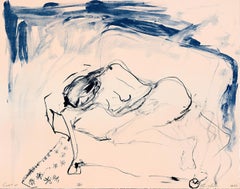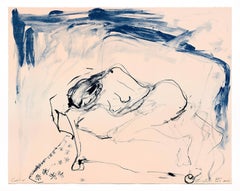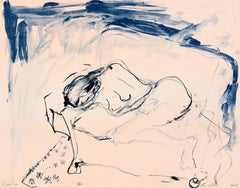Tracey Emin Curled Up
2010s Contemporary Figurative Prints
Lithograph
2010s Contemporary More Prints
Screen
Recent Sales
21st Century and Contemporary Contemporary Prints and Multiples
Lithograph
2010s Contemporary Figurative Prints
Lithograph
People Also Browsed
2010s American Modern Table Lamps
Ceramic
21st Century and Contemporary Swedish Mid-Century Modern Table Lamps
Textile
2010s Italian Modern Chandeliers and Pendants
Metal, Brass
21st Century and Contemporary Portuguese Modern Night Stands
Wood
2010s British Scandinavian Modern Ottomans and Poufs
Velvet, Mohair, Oak
Vintage 1950s German Mid-Century Modern Stools
Metal
21st Century and Contemporary Colombian Mid-Century Modern Wall Lights a...
Brass
21st Century and Contemporary British Modern Pillows and Throws
Cotton
2010s Italian Side Tables
Onyx
2010s European Minimalist Vases
Clay, Stoneware
2010s American Ottomans and Poufs
Zebra Hide
2010s Contemporary Figurative Prints
Lithograph, Offset
2010s Contemporary Abstract Prints
Lithograph, Offset
2010s Bosnian Mid-Century Modern Daybeds
Fabric, Beech, Velvet
20th Century Modern Figurative Prints
Linocut
21st Century and Contemporary Young British Artists (YBA) Figurative Prints
Lithograph
Tracey Emin for sale on 1stDibs
Tracey Emin was born in Croydon, in South London, in 1963, and raised in Margate, Kent. She studied fashion at the Medway College of Design (now the University for the Creative Arts) from 1980–82. At Medway, she met Billy Childish, who would become a huge inspiration for her work, and became closely associated with The Medway Poets. During this time, Emin became the administrator for Childish’s small printing press, Hangman Books.
In 1984 she went on to study printing at Maidstone Art College. In 1983, Emin opened a shop with fellow artist Sarah Lucas, called The Shop in Bethnal Green. The Shop sold works by Emin and Lucas, including original t-shirts and ashtrays featuring iconic artist Damien Hirst.
In November 1993, Emin held her first solo show at White Cube in London. She named her autobiographical exhibition “My Major Retrospective,” which largely consisted of personal photographs, photos of her own early paintings that she had destroyed, and a few emotionally charged items such as a packet of cigarettes her uncle was holding when he was decapitated in a car crash.
In 1994, Emin toured the United States, making stops en route with partner Carl Freedman to give readings from her autobiographical book Exploration of the Soul. In 1995, Emin produced her famous “tent” — Everyone I Have Ever Slept With 1963-1995 — which was exhibited in Freedman’s curated show “Minky Manky” at the South London Gallery. This piece was later bought by Charles Saatchi and included in the acclaimed 1997 “Sensation” exhibition at the Royal Academy of Arts in London, going on to tour Berlin and New York.
Emin appeared on a Channel 4 television series in 1997 titled Is Painting Dead? that largely comprised a discussion over the Turner Prize. Two years later, in 1999, Emin was shortlisted for the Turner Prize herself and exhibited My Bed at the Tate Gallery. In the same year, she exhibited a number of monoprint drawings inspired by Princess Diana for an exhibition at The Blue Gallery, London.
Elton John and George Michael are both famed collectors of Emin’s work, with Michael holding the “A Tribute to Tracey Emin” exhibition in September 2007 at the Dallas-based Goss-Michael Foundation. A solo exhibition, “This is Another Place,” was held at the Modern Art Oxford from 2002–03, and in 2007, Emin was included in the British Pavilion at the Venice Biennale. The same year, Emin was made Royal Academician by the Royal Academy of Arts. She has previously been invited to include works at the Royal Academy “Summer Exhibitions” dating back to 2001. Emin curated the 2008 “Summer Exhibition” and gave a public talk and interview with Matthew Collings, during which they mused on her role within the Royal Academy. Emin’s art has fetched astronomical amounts at auction, selling to Charles Saatchi, the 2011 Prime Minister (David Cameron), David Bowie and more for their private collections.
Find original Tracey Emin prints and other art on 1stDibs.
A Close Look at Contemporary Art
Used to refer to a time rather than an aesthetic, Contemporary art generally describes pieces created after 1970 or being made by living artists anywhere in the world. This immediacy means it encompasses art responding to the present moment through diverse subjects, media and themes. Contemporary painting, sculpture, photography, performance, digital art, video and more frequently includes work that is attempting to reshape current ideas about what art can be, from Felix Gonzalez-Torres’s use of candy to memorialize a lover he lost to AIDS-related complications to Jenny Holzer’s ongoing “Truisms,” a Conceptual series that sees provocative messages printed on billboards, T-shirts, benches and other public places that exist outside of formal exhibitions and the conventional “white cube” of galleries.
Contemporary art has been pushing the boundaries of creative expression for years. Its disruption of the traditional concepts of art are often aiming to engage viewers in complex questions about identity, society and culture. In the latter part of the 20th century, contemporary movements included Land art, in which artists like Robert Smithson and Michael Heizer create large-scale, site-specific sculptures, installations and other works in soil and bodies of water; Sound art, with artists such as Christian Marclay and Susan Philipsz centering art on sonic experiences; and New Media art, in which mass media and digital culture inform the work of artists such as Nam June Paik and Rafaël Rozendaal.
The first decades of the 21st century have seen the growth of Contemporary African art, the revival of figurative painting, the emergence of street art and the rise of NFTs, unique digital artworks that are powered by blockchain technology.
Major Contemporary artists practicing now include Ai Weiwei, Cecily Brown, David Hockney, Yayoi Kusama, Jeff Koons, Takashi Murakami and Kara Walker.
Find a collection of Contemporary prints, photography, paintings, sculptures and other art on 1stDibs.
Finding the Right Prints-works-on-paper for You
Decorating with fine art prints — whether they’re figurative prints, abstract prints or another variety — has always been a practical way of bringing a space to life as well as bringing works by an artist you love into your home.
Pursued in the 1960s and ’70s, largely by Pop artists drawn to its associations with mass production, advertising, packaging and seriality, as well as those challenging the primacy of the Abstract Expressionist brushstroke, printmaking was embraced in the 1980s by painters and conceptual artists ranging from David Salle and Elizabeth Murray to Adrian Piper and Sherrie Levine.
Printmaking is the transfer of an image from one surface to another. An artist takes a material like stone, metal, wood or wax, carves, incises, draws or otherwise marks it with an image, inks or paints it and then transfers the image to a piece of paper or other material.
Fine art prints are frequently confused with their more commercial counterparts. After all, our closest connection to the printed image is through mass-produced newspapers, magazines and books, and many people don’t realize that even though prints are editions, they start with an original image created by an artist with the intent of reproducing it in a small batch. Fine art prints are created in strictly limited editions — 20 or 30 or maybe 50 — and are always based on an image created specifically to be made into an edition.
Many people think of revered Dutch artist Rembrandt as a painter but may not know that he was a printmaker as well. His prints have been preserved in time along with the work of other celebrated printmakers such as Pablo Picasso, Salvador Dalí and Andy Warhol. These fine art prints are still highly sought after by collectors.
“It’s another tool in the artist’s toolbox, just like painting or sculpture or anything else that an artist uses in the service of mark making or expressing him- or herself,” says International Fine Print Dealers Association (IFPDA) vice president Betsy Senior, of New York’s Betsy Senior Fine Art, Inc.
Because artist’s editions tend to be more affordable and available than his or her unique works, they’re more accessible and can be a great opportunity to bring a variety of colors, textures and shapes into a space.
For tight corners, select small fine art prints as opposed to the oversized bold piece you’ll hang as a focal point in the dining area. But be careful not to choose something that is too big for your space. And feel free to lean into it if need be — not every work needs picture-hanging hooks. Leaning a larger fine art print against the wall behind a bookcase can add a stylish installation-type dynamic to your living room. (Read more about how to arrange wall art here.)
Find fine art prints for sale on 1stDibs today.



